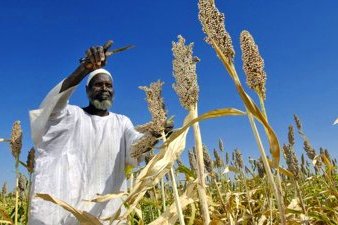
Overlapping impacts of climate change such as drought or flooding, declining crop yields or ecosystem damages create hotspots of risk in specific parts of Africa. These are for the first time identified in a study now published by the Potsdam Institute for Climate Impact Research (PIK).
The uncertainties in assessing the impacts do not necessarily hamper but can inform development strategies, according to the scientists. Likelihood and potential severity of impacts can be weighed to decide on suitable adaptation measures.
“We found three regions to be amongst those most at risk in a couple of decades: parts of Sudan and Ethiopia, the countries surrounding lake Victoria in central Africa, and the very southeast of the continent, including most notably parts of South Africa, Mozambique, Zimbabwe,” says lead-author Christoph Müller. They are projected to see more severe dry seasons and reduced growth of plants, and near Lake Victoria floodings. These regions are the ones in sub-Saharan Africa where, by the end of the century, a combination of high likelihood and possibly severe climate change impacts hits territories with relatively high population and high poverty rates. “We tried to identify the places where climate change really hurts most,” Müller says.
While climate change is a global issue, impacts vary widely
“The good news is that large countries such as Nigeria and the tropical forests of the Congo region are likely to be much less affected,” Müller stresses.
While climate change certainly is a global challenge, as greenhouse gases from the use of fossil fuels disturb ecosystems worldwide, the impacts vary widely over space and time. Up to now, most studies address singular aspects of climate change impacts only, even though multiple stresses amplify the vulnerability. Hence the importance of identifying hotspots – and a composite impact measure that explicitly addresses the issue of uncertainty.
“It’s all about risks,” says Hermann Lotze-Campen, co-chair of PIK’s research domain Climate Impacts and Vulnerability. “We have to live with uncertainties: we don’t have perfect data about future impacts of climate change, but computer simulations can help to understand likelihoods and possible impacts. Climate change clearly threatens people’s livelihoods and thus cannot be ignored. Based on likelihoods and values at stake, we have to make decisions now – as we always do when we’re building a dike or for instance pass regulations on flight safety.”
Managing risks for planning adaptation
Likely impacts, such as more intensive drought periods in the Southern Sahel, clearly demand for developing coping strategies for croppers and herders, even if it remains uncertain how intense this change will be. On the contrary, there is only moderate risk of increased flooding in East Africa, but possibly with severe impacts – especially in countries like Tanzania that are subject to severe floods already today. These must be evaluated case-by-case, judging options to increase resilience and possible damages.
Adaptation measures could include improved access to international agricultural markets to for instance sell cattle before droughts, insurance systems to balance increased variability in crop yields from one year to another, or water storage systems such as underground cisterns.
“This study provides the people on the ground with information they can hopefully use to then decide what to do,” says Lotze-Campen. “A continental scenario analysis like this one can never be a blueprint for adaptation, as it of course lacks the local expertise. Yet it can help to decide where to best put the limited resources in the countries most affected by climate change.”
Details of the Study:
Müller, C., Waha, K., Bondeau, A., Heinke, J. (2014): Hotspots of Climate Change Impacts in Sub-Saharan Africa and Implications for Adaptation and Development. Global Change Biology (online) [DOI:10.1111/gcb.12586]
Source: PIK.

















